Results 10,551 to 10,560 of 12095
Thread: Anandtech News
-
05-06-20, 03:49 PM #10551
Anandtech: Intel Z490 Motherboards Available For Pre-Order: From $150 to $1299
In preparation for the launch of Intel's Z490 chipset and Intel's 10th generation Comet Lake desktop processors, Z490 motherboards are now available to pre-order from various retailers. For entry-level models, pricing starts at just $150, with the more premium and expensive flagships models, notably the GIGABYTE Z490 Aorus Xtreme WaterForce, can cost a mouth-watering $1299.
We analyzed every Z490 motherboard we were told about
in our initial announcement coverage.
You can read that here. It includes the new pre-order pricing.
With every major chipset announcement, comes swathes of models catering to many different markets, including the entry-level, mid-range, content creators, gamers, and so forth. With the release of Intel's 10th gen desktop processors and the supporting Z490 motherboard chipset looming closer, various retailers have put up listings for the majority of Z490 models on pre-order in anticipation of launch day on 20/05. Here are a select few.
Some of the most notable models from the Z490 product stack are the GIGABYTE Z490 Aorus Xtreme WaterForce ($1299) and Z490 Aorus Xtreme ($799), which represents the difference between over the top, and flagship status models. Another example is also ASRock with its equally impressive Z490 Aqua ($1100) which compared to the previous X570 Aqua, has been updated with an OLED display and a pack of hardline fittings within the accessories bundle.
At present MSI's flagship model the MEG Z490 Godlike is a reasonably priced flagship when compared to other vendors, and includes 10 G + 2.5 G Ethernet at $750. The most interesting models from MSI, the MEG Z490 Unify and Z490I Unify haven't been announced at present. The EVGA Z490 Dark has a whopping price tag of $926, which does include a U.2 port, but is focused more towards hardened enthusiasts and extreme overclockers with its range of features including two memory slots on an E-ATX PCB for better memory overclocking and performance.
The release of Intel's 10th gen Comet Lake processors and Z490 motherboards are expected in May. Every model due for launch is currently on pre-order at various retailers around the world including Newegg in the US, and Scan Computers in the UK, with more retailers expected to list more Z490 for purchase over the coming days. A number of retailers are stating a release date of 5/20 for the motherboards.
Related Reading- The Intel Z490 Overview: 44+ Motherboards Examined
- The ASRock Z490 Aqua: Thunderbolt 3, PCIe 4.0 Ready, Water Cooled
- Intel's 10th Gen Comet Lake for Desktops: Skylake-S Hits 10 Cores and 5.3 GHz
- The ASRock X570 Aqua: A $1000 Ryzen Halo Motherboard Reviewed
- Best Motherboards: Q1 2020
- Best CPUs for Gaming: April/May 2020
More...
-
05-06-20, 03:49 PM #10552
Anandtech: New ZADAK Twist DDR4 Memory, Up to DDR4-4133 and 256 GB
ZADAK has announced its latest range of DDR4 memory, the Twist series. Designed for users looking for a lower profile alternative to its previous memory brands, the Twist features aluminium heatsinks and is available in 8 GB to 32 GB modules with speeds of up to DDR4-4133, including a 256 GB of DDR4-4133.
With a black and silver-finished aluminium heatsinks, ZADAK keeps up in the style stakes with its new Twist series. The heatsink measures in at 1.38 inches in height, which is lower profile than the vast majority of ZADAK's current range, but cannot officially considered to be low profile in terms of specification. The heatsinks themselves are constructed from anodized aluminium without RGB LED lighting and are backed by ZADAK's limited lifetime warranty.
Available in multiple capacities ranging from 8 GB to 256 GB kits and speeds from DDR4-2666 to DDR4-4133, it offers multiple kits for many different use cases. Each kit will be available in multiple capacities from 8 GB DIMMs to kits featuring 32 GB UDIMMs, for maximum capability across multiple platforms. For reference, Intel's 10th gen Comet Lake desktop can accommodate up 128 GB, while HEDT platforms such as AMD's Threadripper 3000 series can use the 256 GB (8 x 32 GB) kits.
As an added bonus, there's no RGB on these kits either. At present, ZADAK hasn't revealed when its Twist series will be available in retail channels, nor has it unveiled any scope on pricing.ZADAK Twist DDR4 Memory Specifications Speed LatencyVoltage Available Configurations DDR4-2666 16-18-18-38 1.20 V 8 GB x 1
16 GB x1
32 GB x 1
16 GB (2 x 8 GB)
32 GB (2 x 16 GB)
32 GB (4 x 8 GB)
64 GB (2 x 32 GB)
64 GB (4 x 16 GB)
128 GB (4 x 32 GB)
128 GB (8 x 16 GB)
256 GB (8 x 32 GB)DDR4-3000 16-18-18-38 1.35 V DDR4-3200 16-18-18-38 1.35 V DDR4-3600 18-22-22-38
17-19-19-391.35 V DDR4-4000 18-22-22-38 1.35 V DDR4-4133 19-21-21-42 1.40 V
Gallery: New ZADAK Twist DDR4 Memory, Up to DDR4-4133





Related Reading- SK Hynix: We're Planning for DDR5-8400 at 1.1 Volts
- TeamGroup Announces 32GB T-Force Vulcan Z and Dark Z DDR4 Modules
- G.Skill Launches 256 GB DDR4-3600 CL16 Memory Kit
- GIGABYTE Launches Designare DDR4-3200 Memory, a 64 GB Kit
- The Corsair DDR4-5000 Vengeance LPX Review: Super-Binned, Super Exclusive
More...
-
05-07-20, 11:05 AM #10553
Anandtech: AMD Announces Ryzen Pro 4000 for Mobile: 8 Cores, 15 W, 4.1 GHz
On the back of AMD’s successful Ryzen Mobile 4000 series launch for consumer laptops, the company today launching its range of commercial processors from the same family. These processors are designed for the standard commercial verticals typically associated with company contracts, education deployments, medical use cases and any environment that requires a level of manageability across its workforce. The new AMD processors have up to eight of the latest Zen 2 cores, up to Vega 7 compute graphics, and are built on the latest TSMC 7nm process node technology.
More...
-
05-07-20, 11:05 AM #10554
Anandtech: New Lenovo ThinkPad Range with Ryzen 4000 & 4000 PRO Mobile
Small to medium business owners generally want a something in a compact design, to lug it around to a business meeting to take essential notes, but ultimately can be managed from a central administration system across hundreds or thousands of employees. Catering for this market is Lenovo, and it has announced a pair of new models designed for its SMB customers. The Lenovo ThinkPad E14 and E15 series of notebooks have been improved in design and are now available with up to an including an AMD Ryzen 7 4700U APU. Also announced are AMD's ThinkPad T14, T14s, L14, L15, and smaller X13 models all featuring the latest AMD Ryzen 4000 PRO series processors with extra security features designed for professional and business users.
Adding to its portfolio, including its Intel 10th gen mobile refresh ThinkPad E14 and E15 series, SMB users looking now have an AMD Ryzen based option. Similar in design to the previous E14 and E15 series, the new Lenovo ThinkPad E series will be available with Ryzen 4000 Mobile. Lenovo has stated that it has an improved screen to body ratio of 85%, although it doesn't provide the metric which this is measured against.
The Lenovo ThinkPad series is is available with an eight-core AMD Ryzen 7 4700U APU without SMT and has seven Radeon graphics cores to power the display. While Lenovo hasn't detailed the display or the other vital specifications at this time, it has added a touch fingerprint reader and an optional IR camera powered by Mirametrix. They are quoted as specialists in security and privacy with its gaze tracking technology. This combined with its Glance software which is integrated within adds an extra element of security which respond to a users presence and can automatically lock the laptop when users step away. The touch fingerprint reader is built into the power button and allows users the ability to turn the system on with one touch, which is more secure than conventional power buttons and is suited to business environments.
Lenovo has also announced new ThinkPad T, X, and L series models powered by AMD Ryzen PRO 4000 series processors. The Lenovo ThinkPad 14 Gen 1 is advertised to include a projected 16-hour battery life and a thin lightweight frame of 17.9 mm and 1.46 Kg, with an even bigger 20-hour battery life on its uprated T14s model. The ThinkPad T14s has a slimmer profile at 16.1 mm thick, with a weight starting at 1.27 Kg. The smaller ThinkPad X13 model has a claimed battery life of up to 17.5 hours, with a thickness of 16.9 mm and a weight on an upward curve starting at just 1.28 Kg. This makes the ThinkPad X13 the lightest from its announced stack.
Moving down the new Lenovo ThinkPad stack are the L14 and L15 models which are the largest in size with a thickness of 20.4 mm on the L14, whereas the L15 is slightly chunkier with a thickness of 21 mm. The ThinkPad L14 will have a weight starting at 1.61 Kg, while the L15 will weigh upwards of 1.98 Kg. Both include a projected battery life of up to 14-hours, which Lenovo claims it has used the MobileMark14 benchmark to get this data.
All the Lenovo ThinkPad T, X, and L series models will feature AMD's newest Ryzen 4000 PRO mobile series processors, with extra layers of built-in security features, and feature Lenovo's Self-Healing BIOS, and Lenovo ThinkShield. These new models will be available from June, with prices starting at $849 for the T14, $1029 for the T14s, and $849 for the X13 series. Also available from June will be the L14 and L15 series of ThinkPad models which will both start at $649.
As for the Lenovo ThinkPad E14 and E15 series, both will be available from June and come with a price tag starting at $639.
Related Reading- Microsoft Springs A Surface Refresh: Surface Book 3 And Surface Go 2 Plus Accessories
- The Acer Swift 3 SF314 Notebook Review: Swift Gets Swifter With Ryzen 4000
- Apple Launches New 13" MacBook Pro: 10th Gen Ice Lake and New Scissor Keyboard
- XPG Enters the Gaming Notebook Market with the 15.6-inch XENIA
- HP Updates Pavilion x360 14 Series, A 10th Gen Ice Lake Convertible
More...
-
05-07-20, 04:18 PM #10555
Anandtech: MediaTek Announces Dimensity 1000+ SoC
Today MediaTek announced a follow-up in its SoC line-up with the new Dimensity 1000+. This seems to be a binned or revisioned variant of the Dimensity 1000 announced last year, although we currently lack details on the exact changes.
The Dimensity 1000+ is powered by 4x Cortex-A77 cores up to 2.6GHz and 4x Cortex A55 cores up to 2 GHz. Although we never saw any kind of Dimensity 1000 powered devices out there in the wild, we did manage to get our hands on an Oppo Reno 3 with a Dimensity 1000L – a lower binned variant of the flagship chip.MediaTek SoCs SoC Dimensity 1000 Helio G90
(Helio G90T)CPU 4x Cortex A77 @ 2.6GHz
4x Cortex A55 @ 2.0GHz2x Cortex A76 @ 2.0GHz
(2.05GHz)
6x Cortex A55 @ 2.0GHzGPU Mali-G77MP9 @ ? MHz Mali G76 MP4 @ 720MHz
(800MHz)APU / NPU / AI Proc. / Neural IP "3rd gen APU"
2 "big" + 3 "small" + 1 "tiny"
4.5TOPs total perf2x APU
+1TOPs total perfMemory 4x 16b LPDDR4x LPDDR4X @ 2133MHz ISP/Camera 80MP
or
32MP + 16MP1x 48MP (64MP)
or
2x 24+16MPEncode/
Decode2160p60
H.264 & HEVC
& AV1 (Decode)2160p30
H.264 & HEVCIntegrated Modem 5G Sub-6
DL = 4600Mbps
200MHz 2CA, 256-QAM,
4x4 MIMO
UL = 2500Mbps
200MHz 2CA, 256-QAM,
2x2 MIMO
LTE Category 19 DLCategory 12/13
DL = 600Mbps
3x20MHz CA, 256-QAM, 4x4 MIMO
UL = 150Mbps
2x20MHz CA,64-QAMConnectivity WiFi 6 (802.11ax)
+ Bluetooth 5.1
+ Dual Band GNSSMfc. Process N7 12FFC
Even this lower binned variant performed quite excellently, able to showcase higher performance as well as better power efficiency compared to competing SoCs such as the Snapdragon 765.
The GPU is a Mali G77MP9 – but again since we never saw the full featured D1000 in the wild we don’t know how the D1000+ will perform. The lower-binned D1000L certainly showcased good performance at excellent power consumption.
The SoC includes a 5G modem capable of sub-6GHz frequencies (which covers the vast majority of markets). The chip also currently is the only mobile chip this year that support AV1 hardware decoding, an interesting feature that makes MediaTek’s offerings more future-proof than other chipsets.
Today’s announcement generally seems a bit meagre on details on what the D1000+ provides over the D1000. Vivo’s iQOO is said to be designing a phone powered by the new chipset, which hopefully means we’ll finally see the full potential of the Dimensity 1000 SoC materialise.
Related News:- MediaTek Announces Dimensity 1000 SoC: Back To The High-End With 5G
- CES 2020: MediaTek Announces New Dimensity 800 Mid-Range 5G SoC
- Intel and MediaTek Announce Partnership To Bring 5G Modems to PCs
- MediaTek Announces New Helio G90 Series SoCs: Gaming Focused Mid-Range
- MediaTek Announces 7nm 5G With Cortex-A77 CPU, Mali-G77 GPU Coming
More...
-
05-07-20, 04:18 PM #10556
Anandtech: LG Announces VELVET Phone: Korea Only For Now
LG had been teasing the “Velvet” for several weeks now, trickle-feeding information about the company’s new premium level smartphone. Today, the company officially launches the device in Korea, fully revealing the specifications of the device as well as its pricing.
The LG Velvet isn’t a “true flagship” as it positions itself just one tier below that, featuring a Snapdragon 765 SoC as well as a lesser camera configuration. Where it does stand out is in the design – whilst some might criticise as “standard”, it’s probably LG’s best-looking phone in years. All whilst maintaining a reasonable price tag of around 670 USD.
Internally, the phone is powered by the Snapdragon 765 SoC, which is Qualcomm’s second-highest tier chip this year. Supporting two Cortex-A76 cores, one at 2.3GHz and one at 2.2GHz alongside 6 Cortex-A55 cores at 1.8GHz, it should perform adequately, although it’s still quite behind the flagship Snapdragon 865 phones out there.LG Velvet V60 SoC Qualcomm Snapdragon 765
1x Kryo 475 Prime (CA76)
@ 2.3GHz
1x Kryo 475 Gold (CA76)
@ 2.2GHz
6x Kryo 475 Silver (CA55)
@ 1.8GHzGPU Adreno 620DRAM 8 GB Storage 128 GB UFS 2.1
+microSDDisplay 6.8" FullVision AMOLED
2460 x 1080 (20.5:9)Size Height 167.2 mm Width 74.1 mm Depth 7.9 mm Weight 180 grams Battery Capacity 4300 mAh (Typical) Wireless Charging Qi Rear Cameras Main 48MP
f/1.8 w/OISWide 8MP
Super-wide angleExtra 5MP
DepthFront Camera 16MP I/O USB 2.0 Type-C
3.5mm headphone jack
Fingerprint readerWireless (local) Wi-Fi 6
Bluetooth 5.1Cellular GSM, CDMA, HSPA, 4G/LTE, 5G Splash, Water, Dust Resistance IP68 Dual-SIM nano-SIM Launch OS Android 10 Launch Price ?899,800 (~670 USD pre-tax)
LG configures the Velvet with 8GB of DRAM as well as 128GB of UFS 2.1 as base storage configurations, and there’s a microSD slot for expansions.
Dimension-wise, although it shares the same screen diagonal as the LG V60 at 6.8”, the Velvet is a quite smaller phone as the screen curves to the sides and has very narrow side-bezels, resulting in a 74.1mm body width – around the same form-factor as an S20+.
It’s an POLED display with 2460 x 1080 resolution in a 20.5:9 aspect ratio, LG here is lacking any special features such as high refresh rates.
As teased several weeks ago, it’s a quite differently looking LG device as it sports a new industrial design that leaves behind some of LG’s more “practical” approaches of previous generations. Yes it’s still very much a glass sandwich and certainly not anything revolutionary, but I still think it looks quite good in terms of its execution.
The Velvet maintains a reasonable weight and thickness at 180g and 7.9mm – still able to host a 4300mAh battery in its body.
The camera setup was the one big unanswered question in terms of specifications of the phone, but today’s announcement seems quite disappointing in this regard. The phone has a 48MP main camera alongside a measly 8MP ultra-wide-angle and a 5MP depth sensor module. This really is quite below the industry standard at this device level – I just hope that the 48MP module is a decent one as I don’t have much expectations of that UWA.
Other selling-points of the Velvet is the fact that it still features a 3.5mm headphone jack which nowadays is a rarity in new phones.
LG announced the Velvet only in Korea for now at a price of ?899,800 which corresponds to $670 pre-taxes. It’s an attractive phone, but I feel like it will be a make-or-break matter in regards to its camera abilities. The fact that LG is only releasing the device in Korea at this moment in time suggest that they’re experimenting and waiting out to gauge the reactions before possibly considering a wider device launch. I certainly commend them on the new industrial design of the phone – the company’s certainly on the right path in that regard.
Related Reading:- LG Teases "Velvet" Phone with Snapdragon 765
- LG’s V60 ThinkQ 5G Debuts: 6.8-Inch Display, Snapdragon 865, 8 GB RAM
- LG at CES 2020: LG's Press Conference Live Blog 8:00AM PT
- The LG G8 Review: Solid, But Not Great
More...
-
05-08-20, 04:20 PM #10557
Anandtech: Meizu Announces New Meizu 17 and 17 Pro Flagships
Today Meizu announced its 2020 flagship follow-up to the popular Meizu 16s: the new Meizu 17 and 17 Pro. The two new phones represent a design shift for the company as it moves to a new industrial design that’s a bit more unique. The new flagship phones are powered by the new Snapdragon 865 SoC and house Sony’s latest IMX686 64MP 1/1.72” main camera sensor.
Meizu is releasing two devices this year, both have the same form-factor with a 6.6” 90Hz OLED screen, but they differ in their other cameras and some other internal specifications, making for a slight price segmentation between the two units.
Both phones are powered by the new Snapdragon 865 chipset by Qualcomm offering top of the line flagship performance. The two devices are 5G enabled and come with support with relevant sub-6GHz band support in their respective launch markets, starting with today’s China launch.Meizu 17 Series Meizu 17 Meizu 17 Pro SoC Qualcomm Snapdragon 865
1x Cortex-A77 @ 2.84GHz
3x Cortex-A77 @ 2.42GHz
4x Cortex-A55 @ 1.80GHz
Adreno 640 @ 587MHzDisplay 6.6" AMOLED
2340 x 1080 (19.5:1)
90Hz Refresh Rate
180Hz Touch SamplingDimensions 160.0 x 77.2 x 8.5 mm 199 grams 217 grams RAM 8 LPDDR4X 8/12GB LPDDR5 NAND
Storage128/256 GB UFS 3.1 Battery 4500mAh (17.35Wh) typ. 30W Fast Charging No wireless charging 27W Fast Wireless Charging Front Camera 20MP
f/2.0Primary Rear Camera 64MP 0.8µm 1/72" IMX686
(16MP 1.6µm 2x2 binning)
f/1.8
26mm eq.Secondary
Rear Camera12MP 1.4µm IMX362
secondary main?
f/1.9
??mm eq.8MP 1.0µm OV 08A10
Telephoto
f/2.4
79mm eq.Tertiary
Rear Camera8MP 1.12µm S5K4H7
Ultra-Wide
f/2.2
118° / 16mm eq.32MP IMX616
Ultra-Wide
f/2.2
129° / 15mm eq.Extra
Camera5MP 1.12µm S5K5E9
Macro Camera
f/1.93D ToF 4G / 5G
ModemSnapdragon 5G - Snapdragon Modem X55 (Discrete)
(LTE Category 24/22)DL = 2500 Mbps - 7x20MHz CA, 1024-QAMUL = 316 Mbps 3x20MHz CA, 256-QAM
(5G NR Sub-6)DL = 7000 MbpsUL = 3000 MbpsSIM Size NanoSIM Wireless 802.11a/b/g/n/ac/ax
BT 5.1 LE, NFC, GPS/Glonass/Galileo/BDSConnectivity USB Type-C
no 3.5mm jackSpecial Features On-screen fingerprint sensor,
Stereo SpeakersLaunch OS Android 10 w/ FlymeOS Launch Prices 8+128GB: RMB3699 (~$522)
8+256GB: RMB3999 (~$564)8+128GB: RMB4299 (~$606)
12+256GB: RMB4699 (~$663)
Meizu uses 128 or 256GB of UFS 3.1 storage capacities for both phones, while on the DRAM side the Meizu 17 comes with 8GB of LPDDR4X, and the 17 Pro offers either 8GB or 12GB of LPDDR5, marking Meizu as one of the rarer vendors who make use of the chipset’s hybrid memory controller.
The phone is actually quite large and a significant upsizing from past Meizu flagships, as the 17’s now come in a 160mm x 77.2mm (!!) footprint, making these one of the biggest phones out there. Thickness comes in at 8.5mm for both units.
In the bigger form-factor we find a 6.6” AMOLED display from Samsung which is said to have been designed in collaboration with Meizu to achieve smaller 3mm top and bottom bezels. The resolution is at 2340 x 1080p, so a 19.5:9 aspect ratio, and the screen support 90Hz refresh rate alongside 180Hz touch sampling.
The front camera module is a 20MP unit with f/2.0 optics and is a display hole cut-out design. The speciality here is that the cut-out radius is only 2.99mm which if we’re not mistaken is the smallest radius of its kind to date in a smartphone.
Whilst both variants feature the same 4500mAh battery capacity, the 17 Pro is heavier at 217 vs 199g because of the inclusion of different internal hardware. The one thing that is outright omitted from the regular version is wireless charging, whilst the Pro version supports 27W fast wireless charging, on top of the 30W wired charging for both units.
Both phones share the same main camera sensor with is a 64MP IMX686 – the successor to the widely popular IMX586 last year. The sensor features 0.8µm pixel pitches and is of a 1/1.72” diagonal which means it’s among the bigger sensors out there today. With 2x2 pixel binning it results in 16MP photos with an effective light gathering pixel-pitch of 1.6µm. The optics are a 26mm equivalent focal length with an f/1.8 aperture. Meizu seemingly doesn’t outright specify OIS so we do hope it’s present on the module.
The other camera modules differ completely between the two variants, starting off with the regular Meizu 17:
We find a 12MP secondary IMX362 module that in some PR materials is described as a telephoto module, although the company doesn’t exactly list the zoom or focal length. We find f/1.9 optics here.
There’s also a smaller Samsung S5K4H7 8MP ultra-wide angle module with a 118° field-of-view / 16mm equivalent focal length with f/2.2 optics, as well as a 5MP macro camera module.
The Meizu 17 Pro changes up the non-main camera modules. First of all, the telephoto module is now powered by an Omnivision 08A10 sensor with a 3x zoom capability to up to 79mm equivalent focal length, but it’s of a lower 8MP resolution with 1.0µm pixels.
The ultra-wide angle on the 17 Pro is extremely interesting as it’s a 32MP IMX616, a very rare configuration. For some reason Meizu describes this as a 129° field of view module even though the focal length is only 15mm equivalent, narrower than some other devices we’ve seen out there, so the specs here are a bit conflicting. There’s f/2.2 optics on the unit. The speciality here is that Meizu dropped the macro module in favour of a 3D ToF (Time of flight) sensor, as the ultra-wide-angle unit has an auto-focus mechanism that allows it to focus as closely as 3cm and act both as a ultra-wide as well as a macro unit.
The Meizu 17 is available as 8+128 or 8+256GB configurations for RMB3699 (~$522) and RMB3999 (~$564), while the Meizu 17 Pro comes in either 8+128 or 12+256GB configs at RMB4299 (~$606) or RMB4699 (~$663), with pre-orders in China starting today and availability starting Monday the 11th. We expect Meizu to release the phones in other markets such as Europe later in a few months’ time, as they usually do.
Related Reading:- Meizu Releases The 16s: 48MP and Snapdragon 855
- Meizu Announces M6s with Exynos 7872
- Meizu Unveils Super mCharge: Fast Charging At 55W
- Xiaomi Launches Mi Note 10 Lite, Redmi Note 9 & Note 9 Pro Globally
- Xiaomi Globally Launches Mi 10, Mi 10 Pro; Snapdragon 865 & 108MP Cameras
More...
-
05-11-20, 04:43 AM #10558
Anandtech: Qualcomm Announces Snapdragon 768G: Higher-bin 765 up to 2.8GHz
Today alongside with the launch of the Xiaomi Redmi K30 5G Racing Edition, Qualcomm is announcing the new Snapdragon 768G SoC which powers the device. The new SoC is a direct follow-up to the Snapdragon 765G announced last December, and the two chips are very likely the same silicon design, with the new variant increasing the clock frequencies.
The new chip features the same Cortex-A76 cores in a 1+1 configuration (one Prime high-clocked core, and one medium clocked core), alongside 6 Cortex-A55 cores. The difference in CPU performance lies in the frequencies of the big cores which are now at up to 2.8GHz and 2.4GHz for the Performance and Middle core – a more notable uplift from the 2.4 and 2.2GHz clocks of the Snapdragon 765G.Qualcomm Snapdragon Premium SoCs 2019-2020 SoC Snapdragon 768G Snapdragon 765
Snapdragon 765GSnapdragon 730 CPU 1x Cortex A76
@ 2.8GHz
1x Cortex-A76
@ 2.4GHz
6x Cortex-A55
@ 1.8GHz1x Cortex A76
@ 2.3GHz (non-G)
@ 2.4GHz (765G)
1x Cortex-A76
@ 2.2GHz
6x Cortex-A55
@ 1.8GHz2x Cortex-A76
@ 2.2GHz
6x Cortex-A55
@ 1.8GHzGPU Adreno 620
+15% perf over 765GAdreno 620
+20% perf (non-G)
+38% perf (765G)Adreno 618 DSP / NPU Hexagon 696
HVX + Tensor
5.4TOPS AI
(Total CPU+GPU+HVX+Tensor)Hexagon 688
HVX + TensorMemory
Controller2x 16-bit CH
@ 2133MHz LPDDR4X / 17.0GB/s2x 16-bit CH
@ 1866MHz LPDDR4X 14.9GB/sISP/Camera Dual 14-bit Spectra 355 ISP
1x 192MP or 36MP with ZSL
or
2x 22MP with ZSLDual Spectra 350 ISP
1x 36MP with ZSL
or
2x 22MP with ZSLEncode/
Decode2160p30, 1080p120
H.264 & H.265
10-bit HDR pipelinesIntegrated Modem Snapdragon X52 Integrated
(LTE Category 24/22)
DL = 1200 Mbps
4x20MHz CA, 256-QAM
UL = 210 Mbps
2x20MHz CA, 256-QAM
(5G NR Sub-6 4x4 100MHz
+ mmWave 2x2 400MHz)
DL = 3700 Mbps
UL = 1600 MbpsSnapdragon X15 LTE
(Category 15/13)
DL = 800Mbps
3x20MHz CA, 256-QAM
UL = 150Mbps
2x20MHz CA, 64-QAMMfc. Process Samsung
7nm EUV (7LPP)Samsung
8nm (8LPP)
GPU clock frequencies have also been increased, resulting in at 15% performance boost over the Snapdragon 765.
The rest of the chip is seemingly identical to the Snapdragon 765 series. What’s interesting here is that Qualcomm does name it quite differently in its SKU line-up. While it very much shares the design of the Snapdragon 765, it’s also a possibility that it’s a silicon respin of the chip, the timelines certainly would make sense and it’s also not the first time that Qualcomm would have done this (Snapdragon 821 is an example of this). If the increased clocks come at a cost of higher power draw or loss of efficiency is anybody’s guess right now – there’s also the possibility that yields on Samsung’s 7LPP node has improved and thus enabled the higher frequencies.
Related Reading:- Qualcomm Announces Snapdragon 865 and 765(G): 5G For All in 2020, All The Details
- Qualcomm Goes For The Mid-Range: Snapdragon 765 and 765G
- Qualcomm Announces Snapdragon 665 & 730 Platforms: 11 & 8nm
More...
-
05-11-20, 11:17 AM #10559
Anandtech: MSI Unveils MEG Z490 Unify Series: Unassuming Style
With the release of Intel's 10th generation desktop processors (Comet Lake-S) looming ever closer, MSI has announced a pair of new Z490 models, the MSI MEG Z490 Unify and MSI MEG Z490I Unify. With a clear focus on design, the MEG Z490 Unify and Z490I Unify both carry an all-black aesthetic with no integrated RGB LEDs with some exciting features.
Starting with the MSI MEG Z490 Unify, it follows the ATX form factor and has a wave of features. This includes a solid-looking 16-phase power delivery with Intersil 90 A power stages with are doubled and is controlled by an ISL69269 PWM controller operating in an 8+0 configuration. Some of the main features include three PCIe 3.0 x4 M.2 slots, three full-length PCIe 3.0 slots working at x16, x8/x8, and x8/x8/+4, with two PCIe 3.0 x1 slots. There are six SATA ports with support for RAID 0, 1, 5, and 10 arrays, while the board supports up to 128 GB of DDR4-4800 across its four slots. On the rear panel plenty of high-speed connectivity including a single USB 3.2 G2 20 Gbps Type-C, and three USB 3.2 G2 10 Gbps Type-A ports, as well as a Realtek ALC1220 HD codec handing the boards audio and a Realtek RTL8125BG 2.5 G Ethernet port, and connectors for the Intel AX201 Wi-Fi 6 wireless interface.
The smaller mini-ITX sized MSI MEG Z490I Unify features a 10-layer PCB which is impressive for a board of its size. It has a direct 8-phase power delivery with 90 A power stages, and an Intersil ISL69269 PWN controller regulating the power to the CPU. Looking at the features, it includes dual PCIe 3.0 x4 M.2 slots, four SATA ports, and a single full-length PCIe 3.0 x16 slot, which MSI is stating that it is ready for PCIe 4.0. The rear panel includes a single Thunderbolt 3 Type-C input, with a DisplayPort 1.4 and HDMI video output pairing, and benefits from a Realtek ALC1220 HD audio codec. For networking, there is a single Realtek RTL8125BG 2.5 G Ethernet port, and connectors for the Intel AX201 Wi-Fi 6 wireless interface, which also has support for BT 5.1 devices.
It looks as though MSI enjoy success with its debut of the Unify series on the X570 chipset, and has made the non-RGB themed range a prominent series in its already stacked arsenal. MSI hasn't officially stated when both the MEG Z490 Unify and MEG Z490I Unify will hit retail shelves, with a price of $270 for the mini-ITX model, and $300 for the ATX.
Related Reading- The Intel Z490 Overview: 44+ Motherboards Examined
- The ASRock Z490 Aqua: Thunderbolt 3, PCIe 4.0 Ready, Water Cooled
- Intel's 10th Gen Comet Lake for Desktops: Skylake-S Hits 10 Cores and 5.3 GHz
- Best Motherboards: Q1 2020
- Best CPUs for Gaming: April/May 2020
More...
-
05-12-20, 10:10 AM #10560
Anandtech: Intel Initiates EOL for the VCA2: Three Xeons on a PCIe Card
One of Intel’s more interesting products over the recent years was its range of Visual Compute Accelerator cards, designed to help cloud streaming and encoding/decoding of HD and UHD video. These cards were built on the QuickSync principle, using Intel’s integrated graphics to accelerate the process, but also using special Xeons with added eDRAM (known as Crystalwell) to help accelerate the process. These cards fit into a PCIe 3.0 x16 slot, and used a switch to control them, as well as shuttling data across the PCIe bus. They were launched in 2017, and now Intel is putting them onto the End-Of-Life track for product discontinuance.
These cards were geared towards the cloud video streaming market, and contained three E3-1585L v5 processors inside with Iris Pro P580 graphics. The card as a whole was rated for 235 W, which includes the switch inside, and through a host you could ssh into the CPUs similar to how Intel made Xeon Phi add-in cards. Intel’s SDK pacakages for the card revolved around AVC transcoding at 30 FPS, as well as a Kernel development kit for CAD applications.
We actually saw a third party company at Supercomputing this year who built the cards specifically for HPE’s customer deployments. They were showing off the PCB routing and cooling skills. The card was quite heavy and long, requiring an 8-pin and a 6-pin PCIe connector to provide enough power.
The EOL timeline for the VCA1585LMV starts on May 22nd, with a final order date of August 1st. Orders are non-cancelable after September 1st, and all orders will be shipped by the end of the year. Any orders placed between the final order date and the final shipment date will be filled by any existing inventory. Interestingly enough, Intel also includes this snippet in its product notice that I’ve never seen before:
- Intel will provide reasonable commercial efforts in debugging issues during the warranty period for the product after the PDA date has passed. Fixes cannot be committed, but Intel will endeavor to provide reasonable workarounds for the product.
At this point in time Intel has not stated if it plans to launch a new version of the Visual Compute Accelerator – given that VCA2 is now in EOL and no VCA3 is announced, this line of products has likely finished, or will be replaced by future AI/Xe/FPGA efforts.
Source: Intel PCN 117586-00, Intel Product Page, Intel Server Marketing Library
Related Reading- Intel Announces Xeon E3-1500 v5: Iris Pro and eDRAM for Streaming Video
- Intel Launches "Vision Accelerator Design" Products, Based On Movidius Accelerators & Arria FPGAs
Gallery: Intel Initiates EOL for the VCA2: Three Xeons on a PCIe Card





More...
Thread Information
Users Browsing this Thread
There are currently 21 users browsing this thread. (0 members and 21 guests)





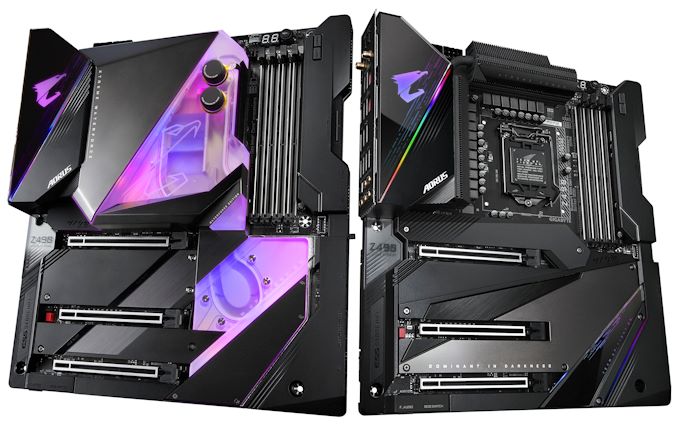
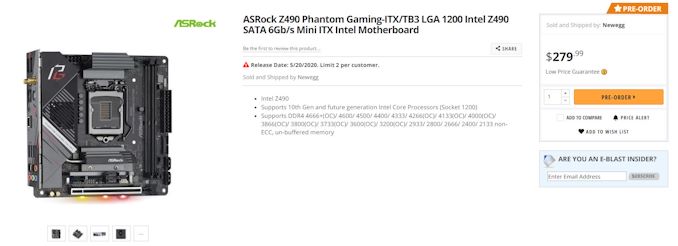

 Quote
Quote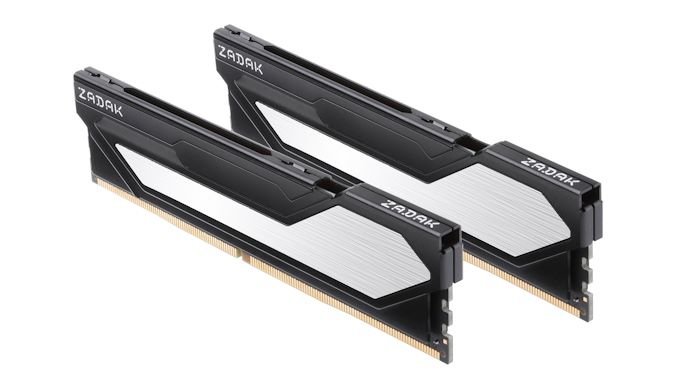

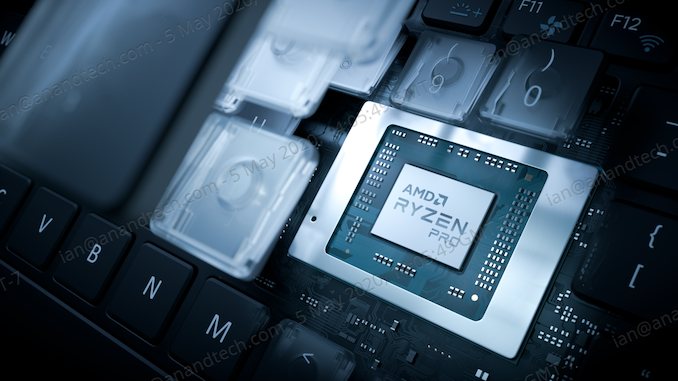
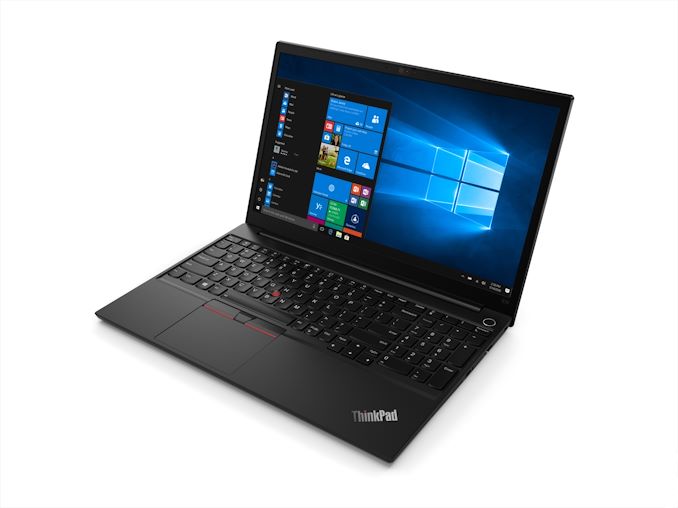
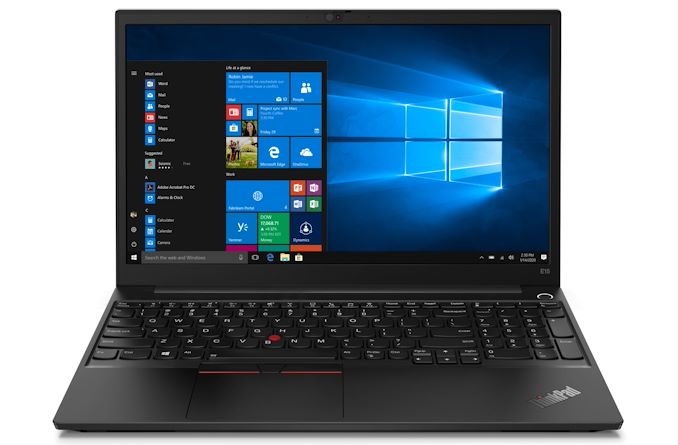
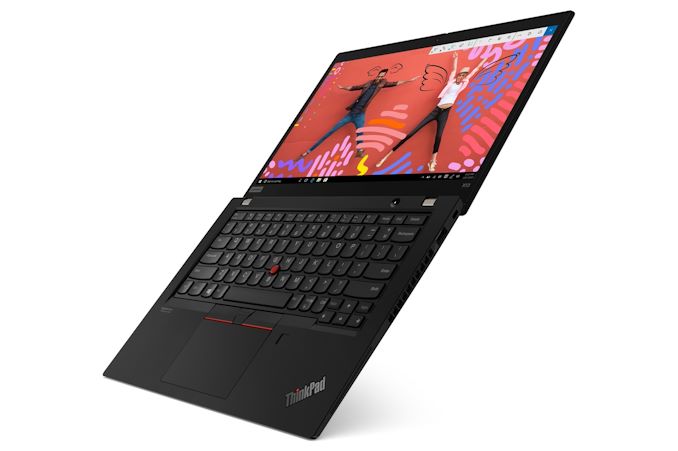
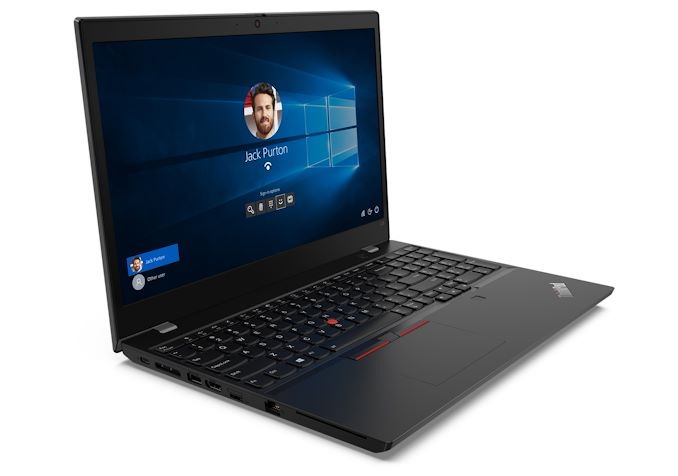
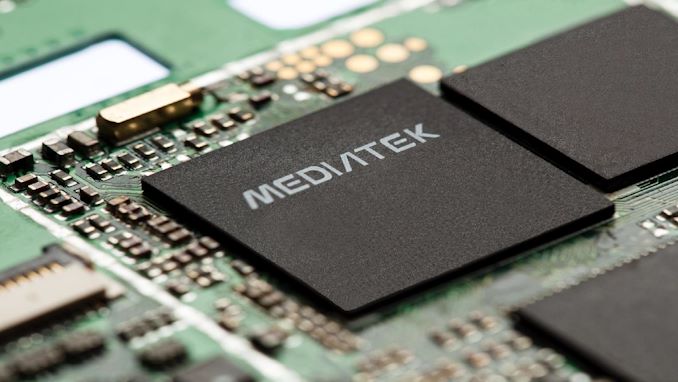
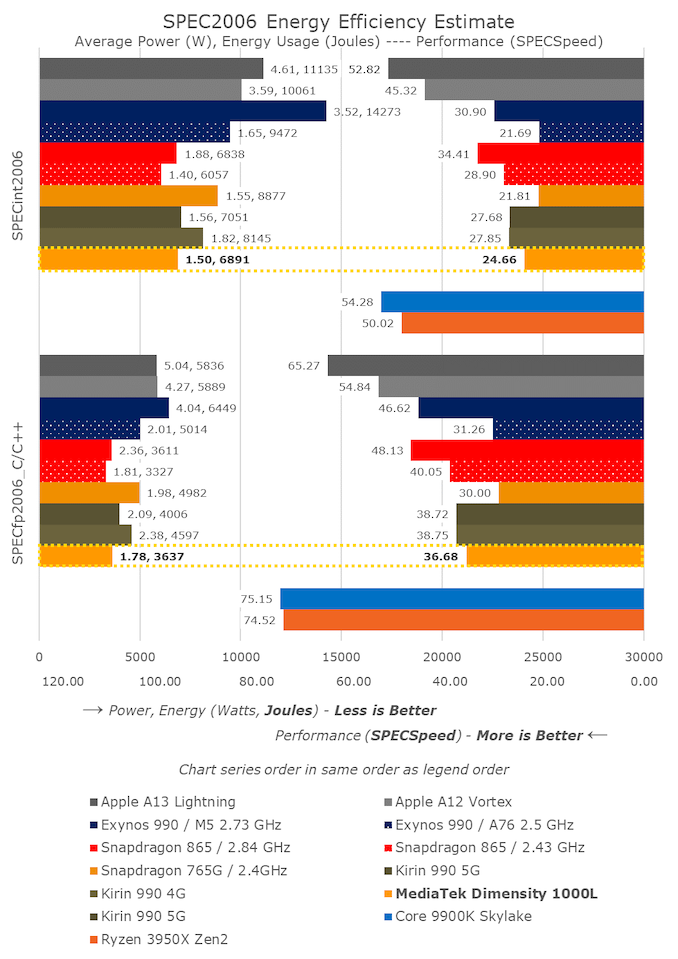
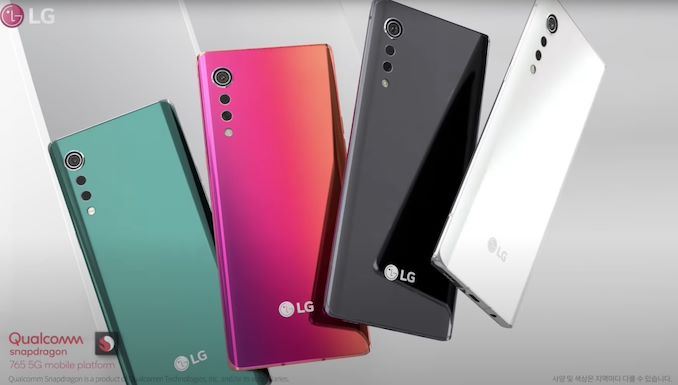





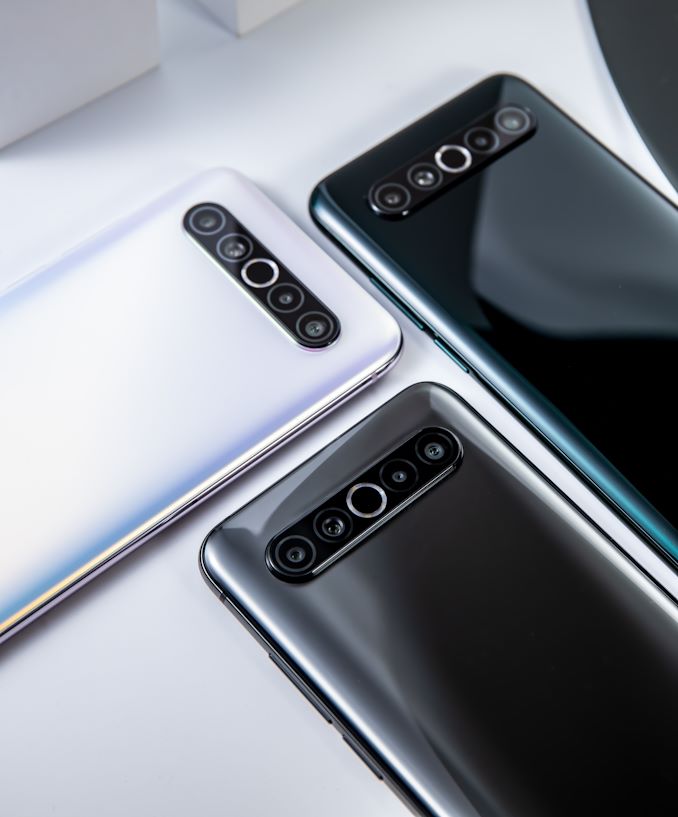


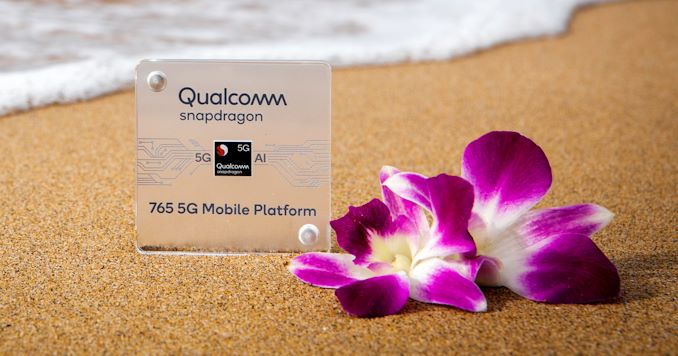
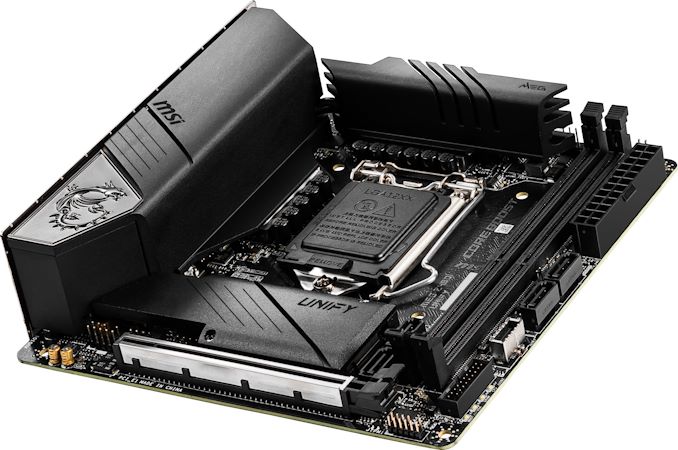

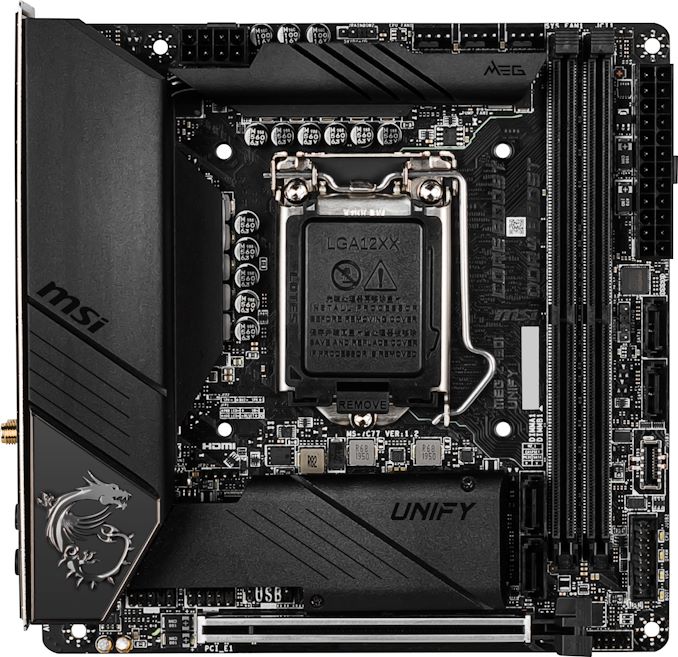
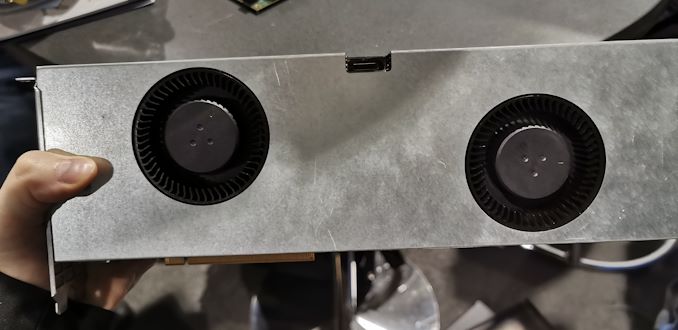
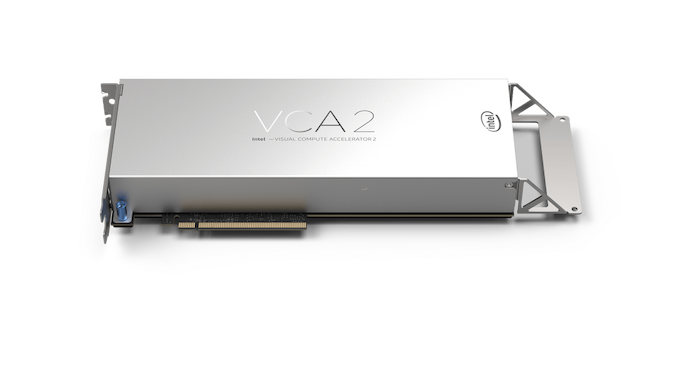
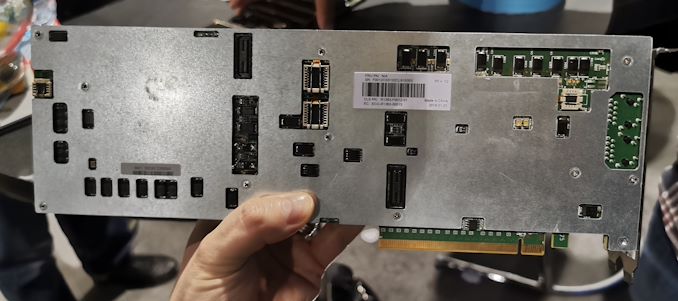
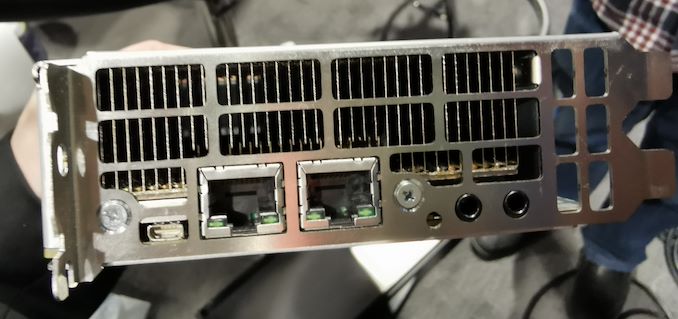
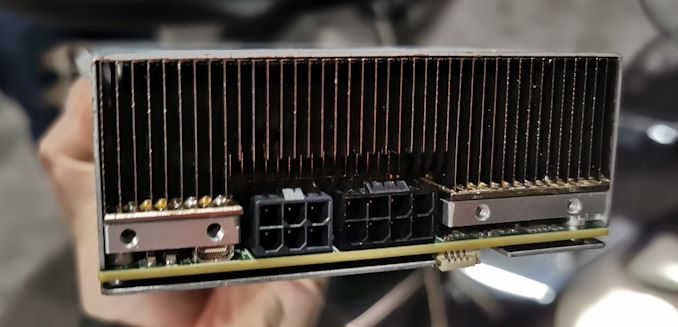

















Bookmarks